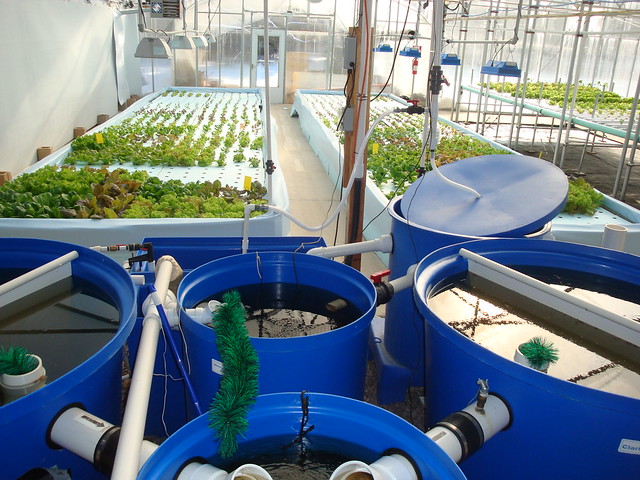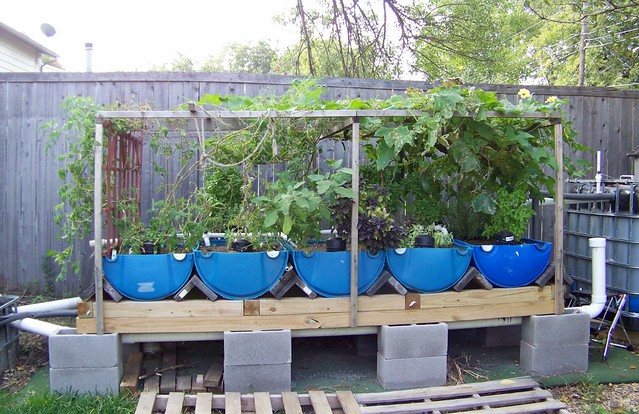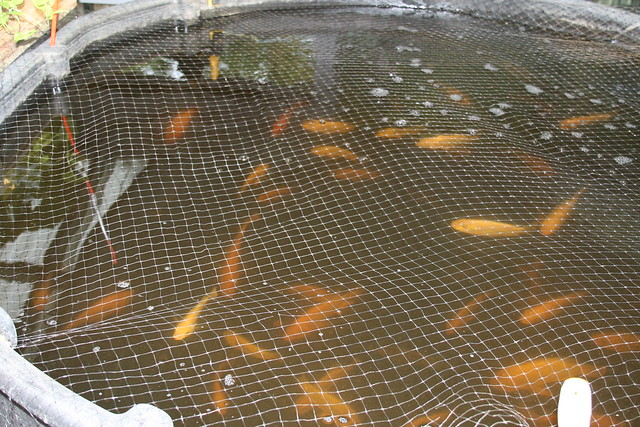 |
| Photo by Kate Field / cc by |
I actually found a few books at the local library. This one talks about aquaponics amongst a slew of other topics. I think that it is an all around good read.
40 projects for building your backyard homestead : a hands-on, step-by-step sustainable-living guide
by Toht, David.
I have three main go to internet sources for aquaponics. The first is Bright Agrotech. It is run by Dr. Nate Storey. His blog is awesome. He has tons of informational YouTube videos on most aspects of aquaponics.
The second is Bigelow Brook Farm. He has some great YouTube videos on strawberry towers and bell siphons.
The last is BYAP (Backyard Aquaponics). They have a lot of great free info on this site as well. What I absolutely love about this site is the forum. There are a lot of experienced and well versed contributors on that forum.
Some important factors to consider when starting aquaponics are location, fish, system design, grow beds and grow media, pump, and cost.
Location
An aquaponic system can be located inside, it would just need to be accompanied with grow lights. If the system is outside, then what is the climate like?
Fish
They can be kept as pets or a source of food. Check with local wildlife management to know what kind of fish are allowed in the area. It is easier to keep a fish that is suited to the local climate. That way the water in the tank might not need to be heated. Fish can be cycled in and out of a system too. It may be easier to stock one type of fish for the summer and another for the winter.
System Design
The plants can be grown in towers, soil less media, rafts, hanging pots, NFT, or many others. There are so many sources out there with all of these systems explained. Start with the three sources mentioned earlier and branch out from there.
Pumps
Make sure that the pump can handle the requirements of the system. Figure out how many gallons of water need to be cycled every hour for the desired set up, lets assume its 20 gallons per hour (gph). Then you need to figure out what is the max vertical distance the water will travel, say it is 6 ft. That is called the head height. The minimum requirement for the pump is the mesh of these two parameters. The smallest pump to buy for the system would be a 20 gph at 6 ft head. To select a correct pump look at the pump charts provided by the manufacturers and pick the one that meets the requirements.
Here is an example of a pump head height graph.
 |
| Photo by Kanu Hawaii / cc by |
The second is Bigelow Brook Farm. He has some great YouTube videos on strawberry towers and bell siphons.
The last is BYAP (Backyard Aquaponics). They have a lot of great free info on this site as well. What I absolutely love about this site is the forum. There are a lot of experienced and well versed contributors on that forum.
 | |
| Photo by Dallashomestager / cc by |
Location
An aquaponic system can be located inside, it would just need to be accompanied with grow lights. If the system is outside, then what is the climate like?
Fish
They can be kept as pets or a source of food. Check with local wildlife management to know what kind of fish are allowed in the area. It is easier to keep a fish that is suited to the local climate. That way the water in the tank might not need to be heated. Fish can be cycled in and out of a system too. It may be easier to stock one type of fish for the summer and another for the winter.
 |
| Photo by Cara Harpole / cc by |
System Design
The plants can be grown in towers, soil less media, rafts, hanging pots, NFT, or many others. There are so many sources out there with all of these systems explained. Start with the three sources mentioned earlier and branch out from there.
Pumps
Make sure that the pump can handle the requirements of the system. Figure out how many gallons of water need to be cycled every hour for the desired set up, lets assume its 20 gallons per hour (gph). Then you need to figure out what is the max vertical distance the water will travel, say it is 6 ft. That is called the head height. The minimum requirement for the pump is the mesh of these two parameters. The smallest pump to buy for the system would be a 20 gph at 6 ft head. To select a correct pump look at the pump charts provided by the manufacturers and pick the one that meets the requirements.
Here is an example of a pump head height graph.
| photo taken from solar pond pumps |
No comments:
Post a Comment